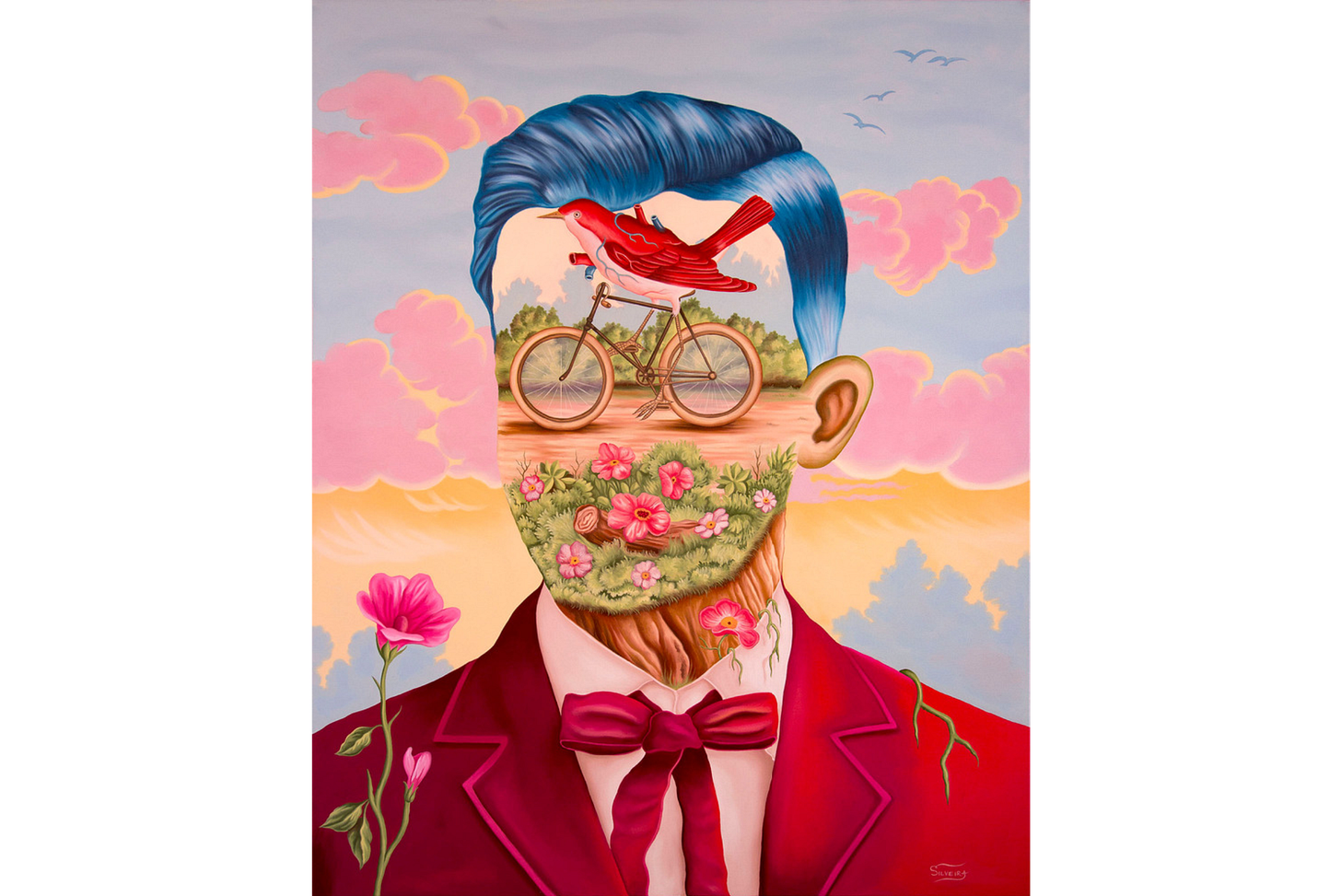Dreams. Nothing has intrigued and eschewed human understanding more.
« Check out this study! There may have been two people communicating in between their lucid dreams. It’s quite the upper echelon of futurity! »
When I get this voice note from my childhood friend Tiziano, his message fills me up with joy. He’s an unusual source for a scientific breakthrough. In our good years, I led in ideas, challenging authority and rule-breaking. He was the one good at sports, picking up girls and video-games.
I need to learn more. After all, significant discoveries belong to the rule-breaking department. It’s a well-known fact.
🔮 What would you remind your dreaming-self about?
The cranky website of REMSpace.net does not inspire immediate trust. On the surface, it has the idiotic yet reassuring flow of every Californian startup’s sales page. When you explore around, it feels like you have stepped out on the wrong floor of Abi Warburg’s library.
REMSpace is the brainchild of Michael Raduga, an intriguing REM sleep researcher. Skimming at his bio, an odd detail strikes me. Raduga was born in Akademgorodok, a Siberian scientific center. My imagination lights up. The city is fit for a novel. The late Soviet Union hid his brightest scientists away in the middle of the Taiga. Scientists were granted higher standards of living and freedom of expression. In exchange, they were tasked to overtake capitalists’ scientific advances. From the integral to metal! (New Atlantis Revisited, Paul Josephson, 1997).
The city is a masterwork of mathematician Mikhail Lavrentyev, a product of the late 1950s wave of regional devolution and destalinization. In this Baconian utopia, pure sciences were meant to be safeguarded from government’s interference. It’s the final act of a culture that celebrated scientific and technological progress well beyond their means, where its last folding hopes resided.1
Enough detours: I could not find any evidence of early Soviet experiments in the field of lucid dreaming technologies. The discovery of ocular-signalling from lucid dreams seems to date back to 1978, to the PhD research of English psychologist Keith Hearne. The field has been growing steadily in various directions (Nature, 2021): a focus of research is to develop methods to induce lucid dreams, another to characterise them in terms of EEG and neuroimaging activity. A further stream of research, championed by Raduga, samples advanced practitioners and attempts to summon a communication protocol with the dreamer (Guardian, 2024).
How to Lucid Dream
Lucid dreaming is hardly a recent discovery. In his short treaty On Dreams, Aristotle described that “often when one is asleep, there is something in consciousness which declares that what then presents itself is but a dream”.
This realisation could be unsettling and wake you up, or it may lead to a special lucid state of consciousness, where everything is possible if you set your intention deeply enough. You could fly. Encounter a loved one who passed away. Or literally anything you can dream of!
How to apprehend such a state? Many techniques exist. For millennia, in the Eastern world, a whole dream yoga discipline provided guidance and practice to their disciples. A reference to Tibetan Buddhism’s Bardo seems here necessary. Bardo are six liminal states of existence, ontologically similar: birth and life, dreaming, meditation, dying, visions and pristine awareness, and becoming or transmigration.
Skimming through Raduga’s book The Phase (an earlier draft is available on the website for free) his technique seem to stem from a brilliant observation: it’s in the moment of awakening that we can most easily induce lucid dreaming. It’s easier to fall back into lucid dreaming from a awakening, then to arise consciousness from within a dream.
We are just waking up. Before we move, open our eyes, or even begin thinking, we relax and ease back into visualisation. We picture effortless active body movements: our trunk spinning, our arms swimming, our hands waving. Waiting to fall back into the dream world. The continuous (imaginary) movement should propagate awareness into the dream state.
Raduga suggests that after six hours of good sleep we drink a glass of water, use the toilet, go back to bed and fall asleep. Every next time we wake up, we use that momentum to induce a lucid dream state by repeated visualisation. I think about it with an instinctive metaphor: it’s like if we used the floor of a pool to reinforce upwards momentum, but before we surfaced, we redirect that force forward.
Sounds easier said than done?
Neuromodulation comes to the rescue
Another start-up that recently stirred up attention on the topic is Prophetic (Slate). They raised $ 1.1 m by prominent VC investors in late 2023 and are currently working on a device called “Halo” capable of inducing lucid dreams by non-invasive neuro-modulation.
Prophetic’s CEO Eric Wollberg describes that his interest about lucid dream came from his time in Jerusalem, where he was reading often about theology, wondering about the prophets’ experience. The company is ambitiously branded towards answering humanity ultimate questions.
But the sales pitch for lucid dreaming is not as hard…
More focus. What problem you care deeply enough you’d want to explore in a couple of simulated universes? When we anxiously ruminate, we run endless scenarios in our mind. Maybe you’d want to move some of that in your night sleep.
More time. There may come a time when living a fourth (up to a third) of our lives unaware will seem unacceptable. Would you ever opt-out of it given the choice? Instead today lucid dreaming is a complex opt-in. Need to choose to care about your sleep hygiene. Write down your dreams. Practice awakening.
The problem with the dream industry
Despite recent press coverage and copious stream of results in the last five years, the the dream industry suffers a positioning problem.
It’s too woo-woo for the down-to-earth crowds and too down-to-earth for the woo-woo crowds.
Some angry redditors on r/AstralProjection have beef with Raduga. “Don’t bother with him, he’s just a materialist, he reduces all out-of-body experience to lucid dreams”. It must feel sour to hear you weren’t abducted by aliens. You just ended up casually exploring Mars in your lucid leisurely sleep. I don’t know about you, but I’d choose the latter every day. Still impressive!
For many other skeptics, dream science seem like wasted human potential. Therapeutic effects and protocols are still undocumented. Progress is scarce. It’s been years since a material breakthrough.
But what if we were on the verge of opening up the porous boundaries of the oneiric world?
What if what was once a subjective experience, was now available for rigorous controlled interference? What would you do with such advanced technology in your lifetime? Would you trust it? Or would you stir away from it, afraid to offer your fresh mind to the advertisement-driven capitalist complex. What if people would never want to leave their bed again, enchanted by imaginary riches?
We are such stuff as dreams are made on
If the prospect of shared dream simulation is now a step closer, it immediately makes me wonder: doesn’t that weight up on the probability that our shard reality is itself in a dream of some kind by a sufficiently advanced civilisation?
“Let's suppose that you were able every night to dream any dream that you wanted to dream. And that you could, for example, have the power within one night to dream 75 years of time. Or any length of time you wanted to have. And you would, naturally as you began on this adventure of dreams, you would fulfill all your wishes. You would have every kind of pleasure you could conceive. And after several nights of 75 years of total pleasure each, you would say: "Well, that was pretty great. But now let's have a surprise”. Let's have a dream which isn't under control, where something is gonna happen to me that I don't know what it's going to be. And you would dig that and come out of that and say "Wow, that was a close shave, wasn't it?" And then you would get more and more adventurous, and you would make further and further out gambles as to what you would dream. And finally, you would dream ... where you are now. You would dream the dream of living the life that you are actually living today. (Alan Watts, emphasis mine)
This classic passage conceives life as you are living it as a continuous antinomic approximation of creative joy and surprise. An equilibrium of liberating, rational comfort and achievable happiness mixed with just the right amount of challenge to keep us busy. Surprise and novelty are key ingredients for dopamine release. Variable rewards keep us engaged and motivated. Nobody wants a life too easy!
We always choose our adventures.
Dream well,
David
Deep in this rabbit hole, I also encountered A Mathematician’s Shiva. It’s the debut novel of a geophysicist, that won 2014 Nation Jewish Book Award for outstanding debut fiction. It’s a sharp and funny account of a man, who just wants to mourn his mathematician mother in peace and has to comes to terms with her outsized influence. Just started it, but can already recommended!







